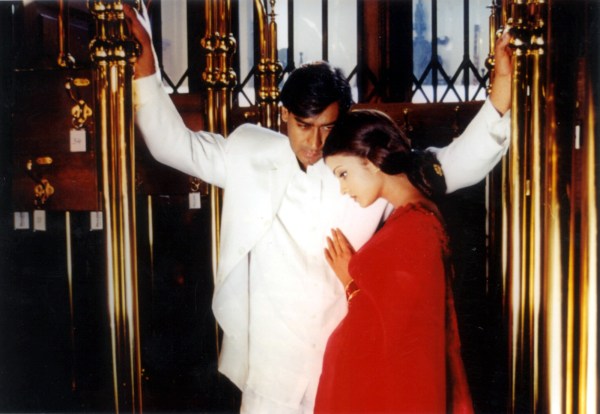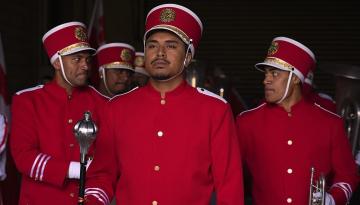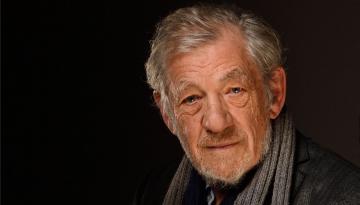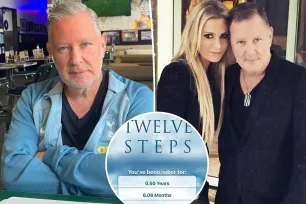Twenty-five years ago, Sanjay Leela Bhansali wasn’t the revered filmmaker known for his unique style. He was a director who had just made one movie, Khamoshi, which was appreciated by the few people who actually watched it. So when he made Hum Dil De Chuke Sanam, which can now be seen as the start of the ‘Bhansali-mania’ in Hindi cinema, he left no stone unturned in making it a spectacle. But alongside the havelis, and the ghagra-cholis, and the dance numbers, it was Aishwarya Rai’s magnificent screen presence that made this one of the most memorable films of the 1990s.
In the years since Hum Dil… released, the conversation around the film has evolved a fair bit. There was a time when fans questioned why Nandini (Rai) would choose to stay with her husband, and it was somehow believed that a mainstream Hindi film couldn’t really take the risk of ‘disrespecting’ the sanctity of marriage. There was also a time when the audience questioned why she couldn’t just accept her husband in the first place? After all, he was the innocent bystander who seemed like a nice guy and also tried to do the right thing by her. But the biggest question still remains unanswered – why did Bhansali take away Nandini’s agency?

When Sanjay introduces Aishwarya’s Nandini with a song called ‘Manmohini’, you see a glimpse of her feisty personality. She is running around in the barren desert of Rajasthan and having the time of her life. You see her and think, ‘what a free-spirited woman’ but soon after this introduction, he starts clipping her wings.
In Aishwarya’s introduction montage in this film, she is presented as the manic pixie girl but the first words out of her mouth are about how she is being literally thrown out of her space because the male protagonist needs it. We are told some made-up, logistical excuse as to why a literal haveli doesn’t have a spare room for a guest but by this one gesture, we learn where she stands in her own world. All the men in her life – her father, her lover and her husband – believe that they are entitled to make decisions for her, and Bhansali allows them to control her as they want.
ALSO READ | Heeramandi: Enough with celebrating ‘tawaifs’ and ‘kothas’, there’s nothing to applaud in non-consensual sex
 It was after Hum Dil De Chuke Sanam that Aishwarya Rai became a movie star.
It was after Hum Dil De Chuke Sanam that Aishwarya Rai became a movie star.
Her lover Sameer (Salman Khan), for instance, tries to kiss her at a family wedding. When she resists, he holds her tightly in his arms. As she starts losing patience with him and tries to get out, she accidentally hits him on his face. Literally 15 seconds after this, you can actually hear Nandini apologising to Sameer, and you are shocked to see that the director, who dedicated a free-spirited, independence anthem to his heroine in the beginning, can’t see who really deserves an apology here. It’s bewildering but this continues even further. He stays mad for days and she continues to apologise.
In the case of her father (Vikram Gokhale), who rejects the idea of Nandini and Sameer’s wedding for no reason whatsoever, we are just asked to accept his dictatorial tendencies. When he asks Sameer to get out of his haveli, you find yourself asking why Nandini isn’t putting up a fight or running away with him. It’s not like she doesn’t realise that she lives in a jail like haveli because she has helped her cousin escape, but we are supposed to roll along when she doesn’t utter a word and just marries the next guy her father sees fit.
 Aishwarya Rai and Salman Khan in Hum Dil De Chuke Sanam.
Aishwarya Rai and Salman Khan in Hum Dil De Chuke Sanam.
ALSO READ | Women are at the core of Sanjay Leela Bhansali’s films: Does he do them justice, or is he only exploitative?
Even in the case of her husband Vanraj (Ajay Devgn), who by the way, is offended when she refuses to have sex with him and literally drags her out of his house when he finds out that she had a life before marrying him, Nandini gets the short end of the stick. He decides to take her to Italy so she can be reunited with her lover but he doesn’t ever ask her what she wants. At this point, you actually start to wonder why Nandini just didn’t leave for Italy all by herself in the first place? She wasn’t introduced as some helpless person but through the course of the film, Bhansali progressively infantilises her.
When Nandini makes her choice in the end, you question if that choice is even hers, or if it’s the result of her conditioning. A woman who has lived in a dictatorial environment all her life, where social acceptance was paramount, has chosen to follow the societal norm of marriage, and Bhansali wants you believe that it was somehow her choice.
 Ajay Devgn plays Vanraj in Hum Dil De Chuke Sanam.
Ajay Devgn plays Vanraj in Hum Dil De Chuke Sanam.
In the 25 years since Hum Dil De Chuke Sanam, many navratras have played ‘Dholi Taro’, many broken-hearted men have cried to ‘Tadap Tadap’, and many women have had Aishwarya’s looks on their Pinterest boards and perhaps those are the elements of this film that hold more importance than the regressive idea of a woman who is treated like a puppet by the men in her life. Yet, Bhansali-philes continue to celebrate his idea of women in film and you wonder if just making them look pretty on screen compensates for how they are actually treated.
Click for more updates and latest Bollywood news along with Entertainment updates. Also get latest news and top headlines from India and around the world at The Indian Express.
Disclaimer: The copyright of this article belongs to the original author. Reposting this article is solely for the purpose of information dissemination and does not constitute any investment advice. If there is any infringement, please contact us immediately. We will make corrections or deletions as necessary. Thank you.







